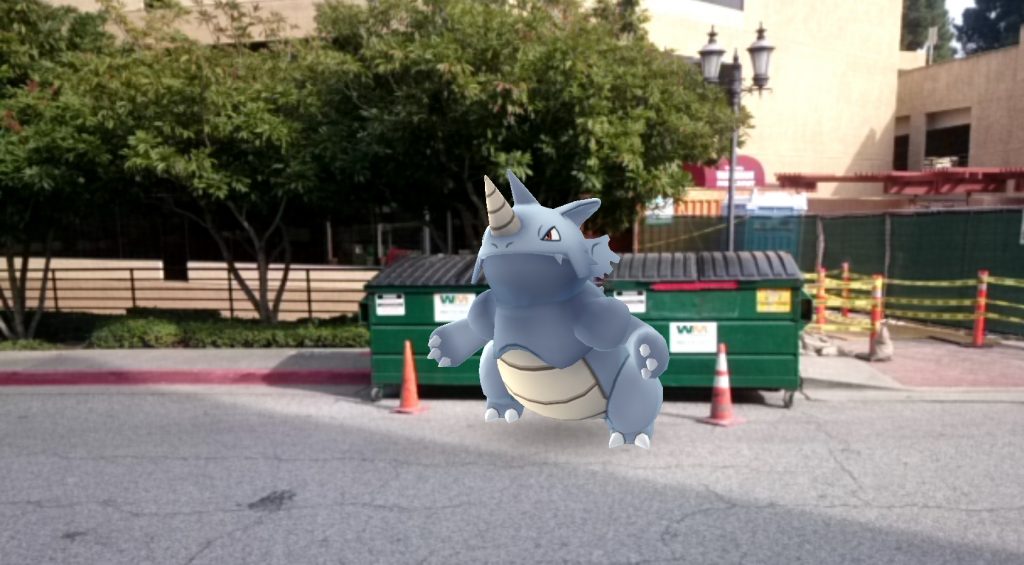
Just in time for your New Year’s resolution, we reported on how Pokemon Go was featured in a peer-reviewed study on getting people to move more. But truthfully, Pokemon and Nintendo have built exercise games several times in the past, and Niantic never advertises PoGO as an exercise game. It’s an ARG. In fact, the official site never mentions exercise, just exploring. That being said, we don’t really think of adventurers or explorers as being slugabeds. So what is PoGO doing with exploration that gets people to exercise, and is it really that effective?
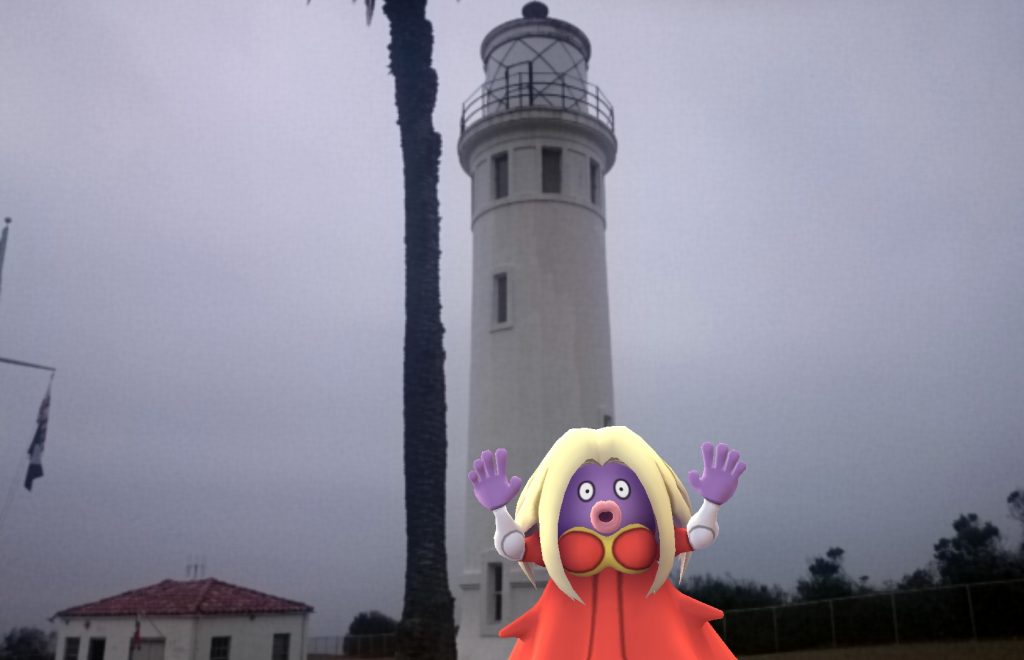
Earthbound exploration
The Pokemon series has always had exploration at its core. Yes, that does frequently involve running back and forth in tallgrass “exploring” what random monster attacks you, but it also means checking nooks and crannies for hidden items or solving a puzzle or two. Frequently, as in most good RPGs (and MMOs!), you’ll encounter areas that are currently blocked off but can be accessed later with the right tool or ability — if you remember to return there.
Pokemon GO has some of this, but in a wholly different manner. There are no abilities to use, but perhaps certain areas, like the lighthouse above, will be open to the public only at certain times. Maybe the road to the gym you want to attack is a private one, but you can see an alternative road from a different angle. And I’m sure most players have struggled with finding out how far they are from that rare Pokemon that’s on their radar but just won’t pop up on their screen (looking at you, multiple Dragonite, Chansey, and Blastoise sightings!).
While the game labels potential landmarks to visit and hides spawn locations, the game can be played by repeatedly visiting the same places, or even just sitting at home (if you live near PokeStops, as I did in Japan), especially with rares appearing more frequently and “migrations” (new Pokemon switching spawn locations) occurring faster. Given that and the lack of diminishing returns on PokeStops, Niantic hopefully isn’t surprised that areas rich in PokeStops become popular playing areas, while rural places where real animals would live tend to be, well, dead.
This is both good and bad. The AR genre or even PoGO itself could potentially help boost conservation efforts. Pokemon creator Satoshi Tajiri actually envisioned the game as a way to motivate kids to want to go out and explore, much as he had when he was a bug-collecting kid. I could certainly relate to that, as could my mother who frequently had to deal with insects (and other things) I’d bring home. When you go out to enjoy nature in the same place for years and notice newcomers coming in and disturbing the natural order or even destroying it (please, please don’t feed the animals!), it gets you to consider humanity’s relationship with the environment and ways you can help ensure the next generation has something to explore beyond games.
However, that’s also a downside. As soon as I’d mentioned the research to my hippy nature-appreciating sister, I realized the folly of the research’s enthusiasm just as she reminded me how little people respect nature. It’s great to get people out into the natural world, but can you imagine the sorts of stories we’d be hearing if national parks had a higher chance of spawning Dragonite or Lapras? Sorry Timmy, but that “Snorlax” isn’t to be trifled with, and daddy really shouldn’t take his eyes off that “Ekans,” even if it’ll make for a sweet Twitter pic. In fact, that’s exactly the scenario faced by environmental authorities in the Netherlands, who actually filed suit in September against Niantic, arguing that the company was encouraging thousands of players to trample the endangered beaches and dunes of Kijkduin. Fortunately, Niantic apparently agreed to work with the government and pulled Pokemon from the area — it might have made for good exploration for humans, but the dunes just couldn’t survive us.
Still, there should probably be a better balance between exploration and exercise, especially if Niantic wants people to look up more.
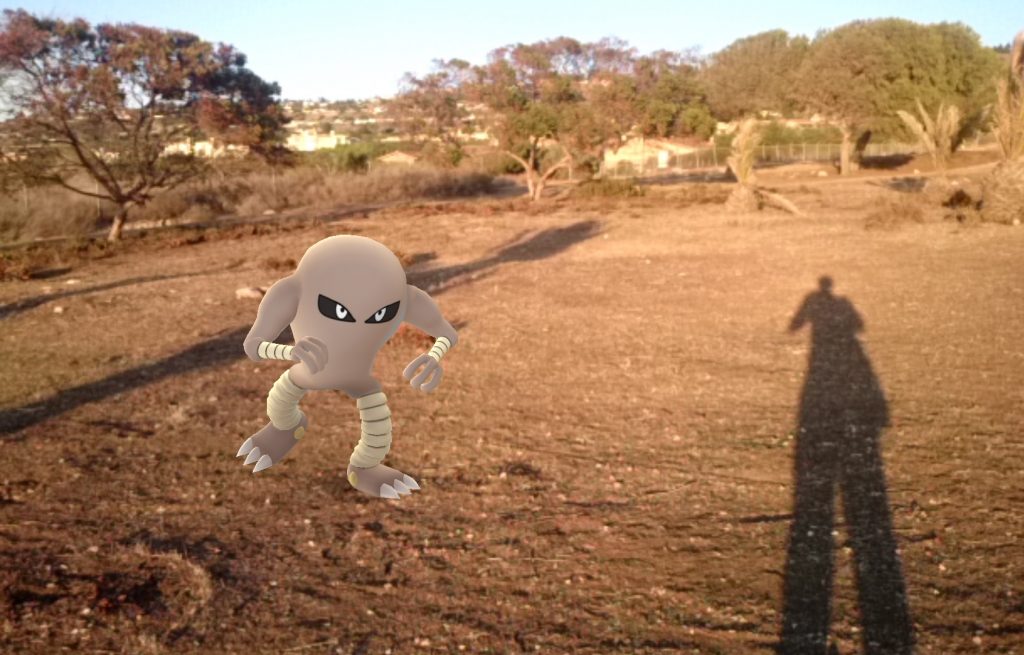
Fusing fun with exercise
Pokemon in particular has asked players to go out into the real world several times before. Nintendo originally started with a simple Pikachu stepping game, but eventually a Pokemon pedometer was created to work with Generation 2 games, allowing you to transfer currency earned through steps to the game for items. Like the previous pedometer, it looked like a Tomogachi, which both now and then didn’t appeal to me. It also didn’t help that the rewards weren’t very exciting. While Nintendo did make a more interesting pedometer for Pokemon Soul Silver and Heart Gold that included more rewards, boasted more options, and helped level your Pokemon, it was included with the system, not sold separately like previous games. Again, I personally skipped not only this third pedometer, but also the game itself, though the pedometer did make me think twice as it sounded like a way to motivate myself to get out more and possibly still enjoy the game without having to grind so much.
Of course, people can and do abuse pedometers, even today. It wasn’t perfect, but Wii Fit actually motivated me to try to get back into shape for several months because exercise was the game. I liked seeing the Wii board mascot cheer me on, which Miis would appear during my island run, or what would happen if I sat perfectly still throughout my yoga balance game.
The issue, though, was that I probably went overboard. That game in particular measured player weight, not muscle mass. Muscle doesn’t weigh more than fat, contrary to the popular myth, but it does take up less space. This is important, since I had dropped a pant size and people had noticed I’d become physically stronger, but the game constantly shamed be about weight that was actually good for me. Apparently though, I was a minority, as it seemed many people couldn’t even last 30 days with the program, and that’s a number we should keep in mind for research purposes.
Surviving 30 days of Pokemon GO
For those who didn’t read the actual research about Pokemon GO Microsoft Band users, let me discuss a few major points. Again, realize these data aren’t perfect; the study targeted people using a specific device that’s not even being continued. However, it was a large study, having over 30,000 participants with only about 1,400 essentially confirmed users. The research wasn’t done via interviews but with data taken from users who permitted Microsoft to allow data collection (so always read your EULAs!).
The researchers tracked players for 30 days, and few people in the study played PoGO for more than 30 days. Another study on the game’s health affects had similar results. All users had been using the Band to track steps for at least seven days before and after using Pokemon GO or other highly rated health apps that couldn’t be named due to legal reasons. What’s really cool is that because of the way the data were collected, there was a control group of people who didn’t seem to play PoGO, so the researchers could compare people who played the game with those who didn’t.
The researchers tracked Microsoft Band users who played Pokemon GO by looking through linked account data, so the team could track the users’ application interests, searches, and work on other devices (again, the power of an EULA!). They also tracked engagement, such as those searching for details on game mechanics being more engaged than those who were just searching for PoGO related deaths. Researchers checked not only steps but Band wear time. The study also accounted for seasonal variables (American summer) and weekends as potential change factors, and the researchers’ conclusions are that they had no effect on the results.
Most of the Pokemon GO players were younger than the control group. There were also significantly fewer women, which is interesting since, anecdotally, in both Japan and America, I feel I’ve met a very healthy number of female players. In fact, compared to games with competitive scenes (like Pokemon tournaments I went to as a kid), I’ve never felt like Pokemon GO is a male-dominated game. Again, this could be a Microsoft Band issue rather than a game issue.
Perhaps unsurprisingly, the overweight PoGO players nearly matched the average of total overweight Band users. On average, PoGO players exercised 25% more than before, across gender, age, and even weight class. However, while overweight players tended to be less active than the average Band user, during their 30 day PoGO time, they averaged 65 steps more a day than the average control group user.
That’s interesting because the control group lost about 50 steps per day on average. That is, the average Band users who were already tracking their steps without gaming involved got less exercise than those who were playing Pokemon GO, and that number was decreasing. The other games the researchers checked similarly got people to increase their steps for a time, but not as much or as long as PoGO did.
People weren’t just increasing their steps, though. They were at least meeting the recommended steps per day when they previously hadn’t been (8,000 steps). Again, while the game did help some people meet this goal, the most engaged users saw the biggest gains. That’s important, since prior research has noted that pedometers alone have mixed results in increasing people’s steps, and from my experience, sticking with other exercise games for more than 30 days did lead to level pant size loss.
In addition, while the average number of steps dropped off with engagement, it’s interesting to note that those who were more engaged with the game stayed active longer than those who were less engaged with the game. More research is needed before we can comment much on why this may be, but again, as someone who gets motivated by these kinds of games, I know that combining exercise with competition motivates me.
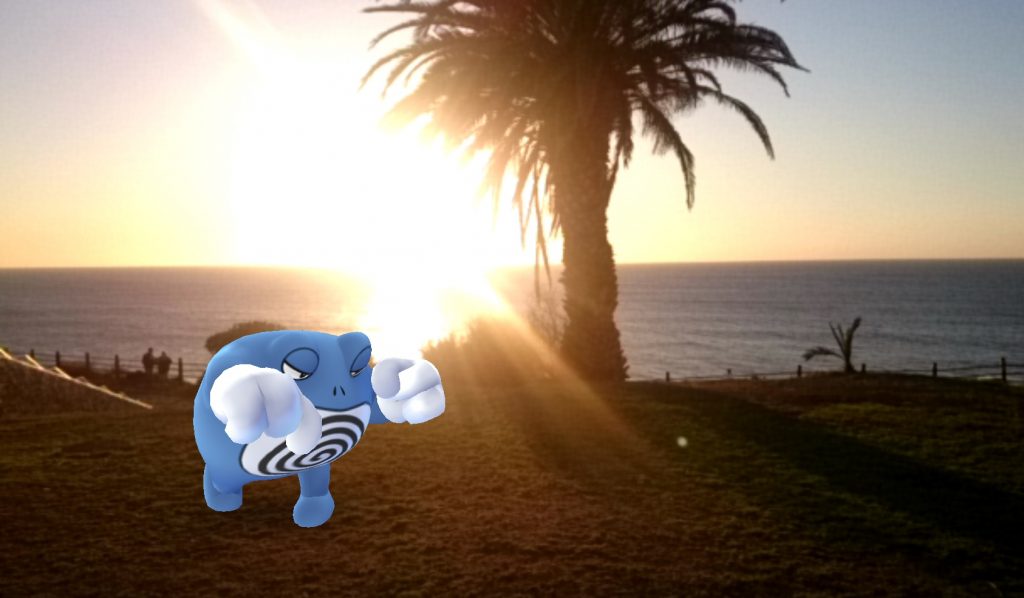
Competition, exercise, and exploration
So what’s going on with Pokemon GO that makes it stand out? For those missing the obvious, the big one is the IP. I’m sure many IPs could be developed into an ARG and have some success, at least temporarily. The thing is, Niantic is trying to get people to explore, but it’s been problematic.
When the game was being developed, I was dating an Ingress player and making notes about problems that occurred because of the way that game is played. Ingress got my ex to go out and walk more, but she’d stop dead in her tracks, in the middle of the sidewalk, or edge near traffic. In terms of exercise, that’s not great, since stopping means you’re not burning as many calories. If she’d walked slowly or maybe walked in place, the varying degrees of pace could help burn more calories. The problem is that, anecdotally speaking, I don’t think I’ve lost any weight with Pokemon GO, just maintained it (which has been a struggle since I returned to America).
But socially speaking, she was creating a problem that’s unique to ARGs. I’d wager it’s one a lot of people have seen with Pokemon GO players. While the game world demands you stand in a location, the real-world location may not allow for that. I’ve discovered a number of places via Pokemon GO that probably should be taken off the map because they’re in restricted areas, such as on private property or in government restricted areas. Some are quite dangerous, and we’ve already seen that ARGs can be fatal.
One thing I think Nintendo did well with its Pokemon games was tying exercise to a larger game with deeper mechanics. While Wii Fit was fun, we’ve seen most people don’t stick with exercise games for long. PoGO seems to initially motivate people more, but it still suffers from the 30-day rule. The issue attaching device-tracked exercise to a deeper game is that, of course, people can cheat with pedometers. Pokemon GO tries to use both GPS and built in pedometers to track players’ walking, but people have found some new and interesting ways to cheat.
However, Nintendo has used another system. The 3DS Streetpass system uses wireless signals to collect data, so if you pass by another player, you’ll be able to see her in Streetpass games. The data cap is quite low (at least if you’re in an area that has lots of 3DS users), but what sets it apart is the ability to go out, act normally, and then play games at home with data you got by going out. There are still technical ways to cheat, of course, but they’re more expensive and mentally demanding than using a Pringles can.
While I admit that I’ve met a decent number of people by playing in gyms, talking and battling in Pokemon GO often doesn’t mix well, especially with casuals. If players simply got near landmarks, Pokemon, and other players, and queued these data up to be played with in a safe place, it might be easier for people to actually do some exploring without standing in unsafe areas or other peoples’ paths. A longer refresh timer (with more plentiful rewards) would get people to travel farther, and the game’s speed-locking system should help combat the driving issue. Having spawn density for Pokemon increase as PokeStop density decreases could also help, potentially aiding rural players and making sure city folk can’t farm supplies all day from their apartment complex.
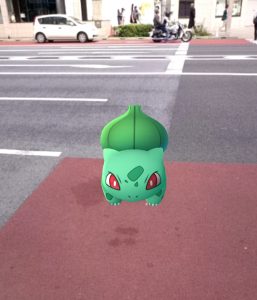 By exporting certain features to a different game/mode, perhaps one that’s browser friendly, Niantic could have focused more on developing the game aspect while keeping users more safe or stop them from acting in potentially life-threatening ways just to catch digital pets.
By exporting certain features to a different game/mode, perhaps one that’s browser friendly, Niantic could have focused more on developing the game aspect while keeping users more safe or stop them from acting in potentially life-threatening ways just to catch digital pets.
Pokemon GO could also then allow players to host events in certain locations to increase the social aspect — like a weekend when having the game running near 25 other players would give you an encounter with a legendary Pokemon. That solves not only the social issue but also location-based issues, as players could simply organize meets in safe places, trigger the event, and then either leave or socialize. This is also how I’d imagine PvP could be done. Heck, world-wide team events might be easier to engineer, as people stuck in their local team minority may quit from gym frustration if they don’t have some alternative gym battling option. All of these could help alleviate content issues, which from the 30-day drop off period, seems to be an issue.
It’s regrettable that Niantic didn’t learn certain lessons from Ingress, but as it is, Pokemon GO at least was able to encourage people to get into better shape for a while and also explore their surroundings a bit. The game is fun, at least in spurts, and the competitive side can be motivating. Combining the need for exercise makes Pokemon GO more than just another game product — it could become one that can improve a person’s health, especially people who don’t normally exercise. The 30-day lifespan of the game could just be for Microsoft Band users and those in the other study mentioned, but it could be the game, or just people in general. However, for now, I’m personally still using Pokemon GO to get myself to exercise and learn a bit more about the places I visit. Besides, I can’t let down my local fellow Mystics, now can I?

